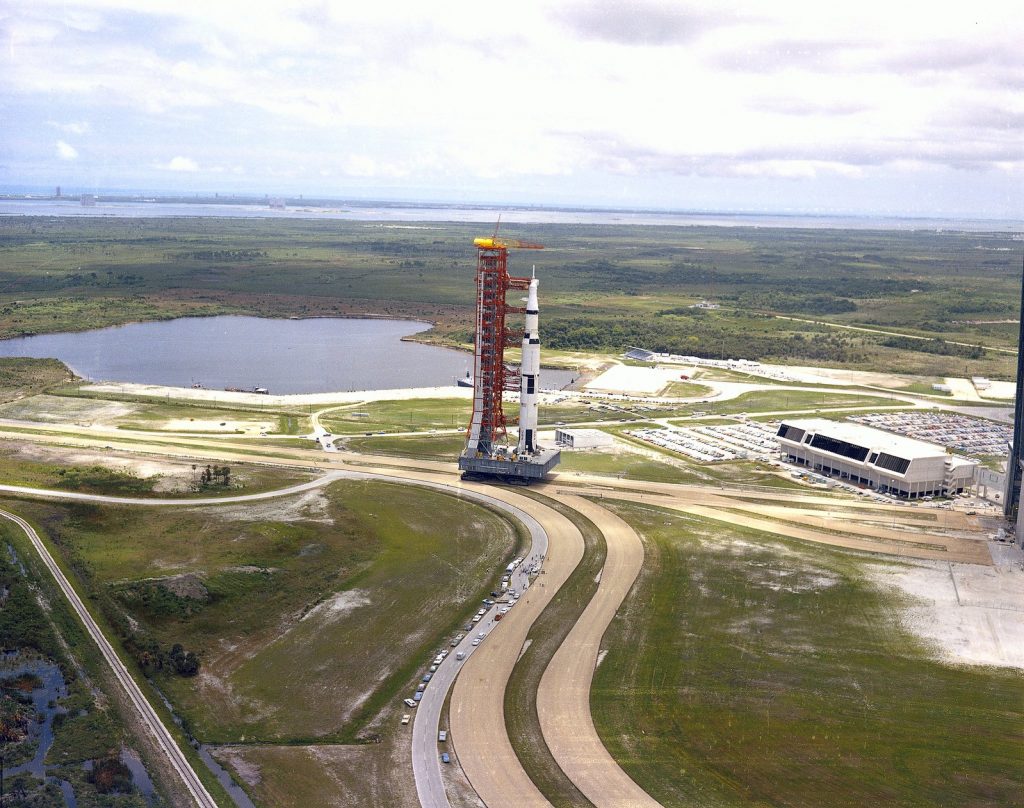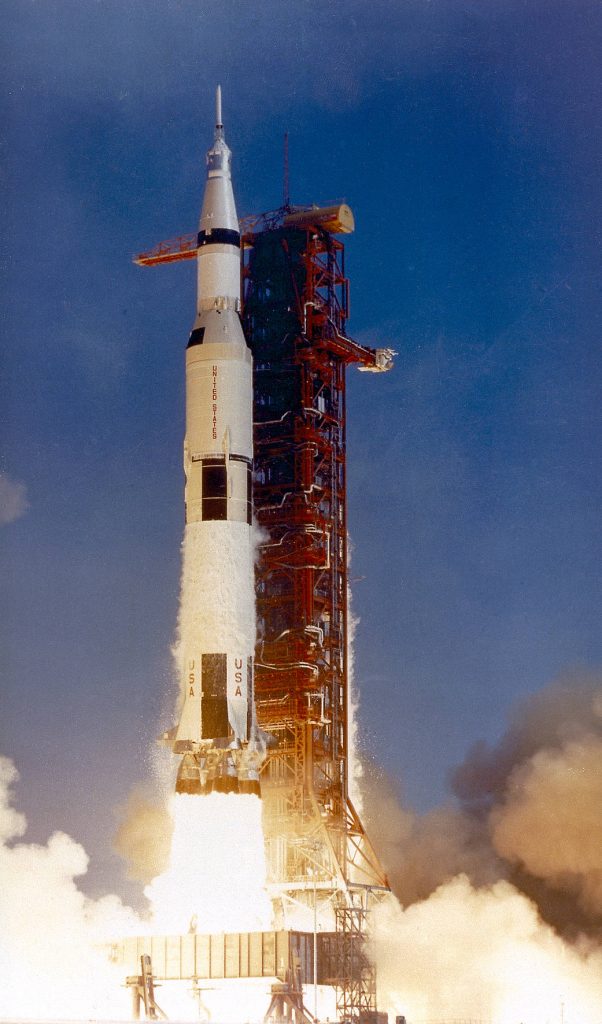Texas Connection to Apollo 11 & 1969 Moon Landing
By Melinda Luna PE, Chair, History & Heritage Committee
Apollo 11’s mission was to complete a crewed lunar landing and return safely to Earth. The mission was prompted by the nation’s space program and President John F. Kennedy, who stood before a Joint Session of Congress on May 25, 1961, and proposed a lunar landing before the decade’s end.
The National Aeronautics and Space Administration (NASA) proudly accomplished this national goal when Apollo 11 launched from Cape Kennedy on July 16, 1969 and safely landed on the moon on July 20, 1969, marking the first time humans landed on the moon. 650 million people tuned into their televisions that day to hear the words “one small step for a man, one giant leap for mankind.”
Not many know there is a Texas connection that contributed to the mission’s success. As we celebrate the 50th anniversary of this historic leap for mankind, I am honored to share this connection.

The Texas connection started in 1962 when a then young Joseph (Joe) Minor, PhD, PE, Dist.M.ASCE, began working with the Department of Structural Research at the Southwest Research Institute. The Institute was working with the Reynold Smith and Hills firm, the primary consultant to NASA, out of Jacksonville, Florida. Dr, Minor was assigned the design, construction and testing of the Launch Umbilical Tower (LUT) and Crawler Transporter (CT) structural models that would carry the Saturn V Rocket and Lunar Module. Every rocket had a launch pad and Apollo 11 had a two-story, 380-ft tower on launch pad 39A. Once the rocket was assembled, the entire platform was rolled out to the launch site. The LUT site was a 135-ft x 160-ft grid system of 25-ft deep plate girders. It required two high speed elevators, and on top of the LUT sat a 20-ft tall crane. The actual LUT weighed 11.5 million pounds, and the CT weighed 6 million pounds.

Dr. Minor fabricated the structure and subjected it to the various load conditions expected in the launch. The model scaled 1:16.72. He documented his analysis and model. The structural frame and its complicated load were a challenge even with the use of computers. If you look at the photos of the launching of the mission, you can see the tower, but in the media, most of the emphasis was on the other aspects of the mission. As engineers, we see infrastructure taking a backseat far too often.
When the work was completed, Dr. Minor was encouraged by another ASCE Texas Section member and Past President, Joe Rady PE, F.ASCE, to write a paper titled “Model Analysis of Saturn V Mollie Launch Platform.” At the time, there was an ASCE ethics paper contest, and Rady encourage Dr. Minor to submit the paper. Dr. Minor won $50 dollars, the equivalent of $423 in 2018, in the Daniel Mead Paper Competition in the spring of 1969. He still had the paper almost 60 years later. The award-winning paper was 20 pages long and included a title page, references and photographs. (Author’s note: Dr. Minor was kind enough to share his paper with me, and I used it to build this story.]
The Space Restoration Society hoped to find a donor to provide $40 million dollars to restore the LUT as a national monument. Unfortunately, the LUT could not be restored because it contained what is now consider hazardous components. The U.S. Environmental Protection Agency (EPA) ordered NASA to demolish the tower and decontaminate the impacted soil. Demolition of the LUT tower began in 1984, and pieces were stored in a fenced-in grass area at the Kennedy space center. The rest of the tower was taken down in 2004.
Dr. Minor is now retired and is organizing his papers, photos, and memories for colleagues, family and friends. This year, he published a book on his Apollo 11 work, “The First 3 Miles to the Moon.”
Share this story:








